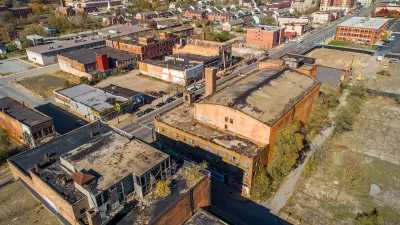To accomodate America's expected population growth by 2050, the country will need to build up to 74 million new homes. This challenge presents a unique opportunity to reshape our urban environment, says Enrique Penalosa, the former mayor of Bogota.
"It is unlikely that city building on the scale to be seen through 2050 will happen ever again," says Penalosa. "Cities are a means to a way of life: the kind of urban structures created over the next few decades will have profound consequences in terms of quality of life, environmental sustainability, economic well-being, and even happiness and the civilization for hundreds of years to come. If we consider the influence American cities will exert on the rest of the world, the way they are built will determine, as well, much of the world’s sustainability and well-being."
Can high-density infill or traditional neighborhood development provide the model? "I don’t think so," he argues. "I believe a different urban model is possible: a dense city with a large percentage of buildings facing pedestrian-and-bicycle-only promenades or greenways."
FULL STORY: A U.S. Template for a Third-Millennium City

Pennsylvania Mall Conversion Bill Passes House
If passed, the bill would promote the adaptive reuse of defunct commercial buildings.

Planning for Accessibility: Proximity is More Important than Mobility
Accessibility-based planning minimizes the distance that people must travel to reach desired services and activities. Measured this way, increased density can provide more total benefits than increased speeds.

World's Largest Wildlife Overpass In the Works in Los Angeles County
Caltrans will soon close half of the 101 Freeway in order to continue construction of the Wallis Annenberg Wildlife Crossing near Agoura Hills in Los Angeles County.

Eviction Looms for Low-Income Tenants as Rent Debt Rises
Nonprofit housing operators across the country face almost $10 billion in rent debt.

Brightline West Breaks Ground
The high-speed rail line will link Las Vegas and the Los Angeles area.

Colorado Bans No-Fault Evictions
In most cases, landlords must provide a just cause for evicting tenants.
City of Costa Mesa
Licking County
Barrett Planning Group LLC
HUD's Office of Policy Development and Research
Mpact Transit + Community
HUD's Office of Policy Development and Research
Tufts University, Department of Urban and Environmental Policy & Planning
City of Universal City TX
ULI Northwest Arkansas
Urban Design for Planners 1: Software Tools
This six-course series explores essential urban design concepts using open source software and equips planners with the tools they need to participate fully in the urban design process.
Planning for Universal Design
Learn the tools for implementing Universal Design in planning regulations.


























